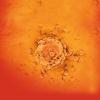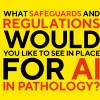Six out of 10 patients in England with “red flag” symptoms indicative of possible cancer didn’t receive an urgent referral for specialist assessment within two weeks, as recommended in clinical guidelines.

Nearly 4% of patients in the sample of 48,715 consultations were subsequently diagnosed with cancer within the next 12 months, new research shows.
Scientists used information on diagnoses, investigations, and treatment of general practice patients supplied to the Clinical Practice Research Datalink – a large database of routinely collected anonymised UK primary care health records.
The red flag symptoms are: swallowing difficulties; postmenopausal bleeding; iron deficiency anaemia; rectal bleeding; blood in the urine; a breast lump.
Overall, 40% of patients received an urgent referral within two weeks of seeing their GP. Of the patients who received an urgent referral, 10% were diagnosed with cancer within the year. Of the patients who didn’t receive an urgent referral the figure was 3.6%.
Image credit |Shutterstock




